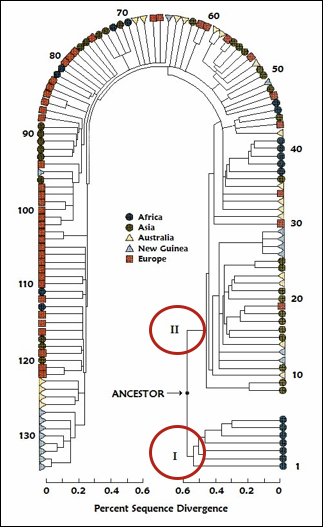Where Did Modern Humans Originate?
The origin of modern humans can be traced back to Africa using mitochondrial DNA. Also called mtDNA, it is uniquely inherited from only the mother. Though it is passed down intact, mtDNA mutates faster than nuclear DNA which results in isolated populations developing their own distinct mtDNA groups. Tracing the differences in mtDNA mutations between populations can show how long ago the populations split and who their last common ancestor was.
Unlike other cell components, mitochondria contain their own DNA.
Genetic researchers took mtDNA samples from 148 geographically diverse societies and were able to construct a genealogical tree showing that the most recent female-line common ancestor of all living humans lived in Africa around 150,000 years ago. However, recent studies have shown that the mtDNA mutation rate might not be constant and that it may undergo some recombination. Different sources of mtDNA in people today could lend support to the hypothesis that humans evolved gradually in multiple places, rather than coming solely out of Africa.

Over 100 different societies are represented by the colored shapes along the outside of this horseshoe-shaped tree diagram. Their mtDNA connects back to a single female ancestor who likely lived in Africa. One of her two descendant groups includes societies only in Africa, while the other includes societies in Africa and throughout the world.
By Grace Anich (’21)

